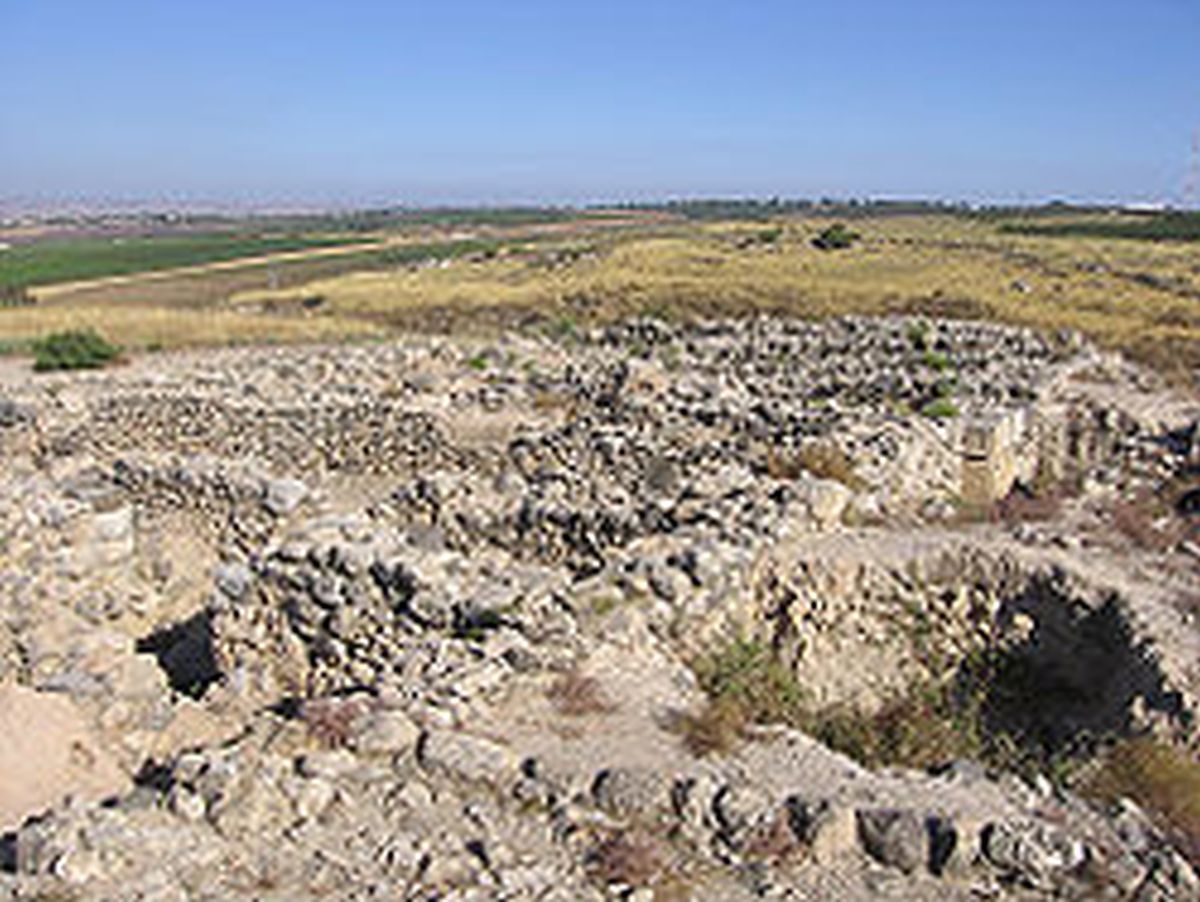
A further link between the Canaanites and Palestinians involves the apparent preference for living in ruins and blaming it on Israel.
Hatzor, Israel, September 9 – Archaeologists excavating the Canaanite stronghold of Hatzor have discovered an artifact that conclusively corroborates the Palestinian claim to descent from those pre-Israelite inhabitants: the shield of a Canaanite warrior, to which a small child has been bound.
The discovery was unearthed last month at the site, which has served as a rich source of data on Canaanite civilization for decades. Palestinian leaders have often contended that they, not Jews, are indigenous to the area, a claim that until now has been at odds with the archaeological and historical record, but still conveys the Palestinian narrative of the land being usurped from them by outsiders.
Whereas the consensus among historians has been that the Palestinian Arabs are descended from groups that migrated to the area from Jordan, Arabia, the Balkans, Syria, and elsewhere over the last 1,500 years, the new find directly links the Palestinian practice of using noncombatants as shields to the Canaanites, a loose amalgamation of city-states that were thought to have faded from history after the Assyrian and Babylonian conquests of the eighth and sixth centuries BCE. The term “Palestine” itself was assigned to the land of Judea, as ancient Israel was known at the time, by Roman Emperor Hadrian in the second century CE specifically as a way to erase the Jewish connection to it. It is derived from the Philistines, a Mediterranean people that invaded and colonized the coastal plain in the centuries before Israelite civilization emerged.
Now, however, the archaeological and historical evidence will have to be reexamined and reinterpreted, says lead excavator P.R. Todtkinder. “Given this new evidence, we are forced to say that the various other records of a later Palestinian arrival have simply been made up,” he noted. “That’s going to make quite a few people uncomfortable.”
Indeed, even among Palestinians the find is being greeted with ambivalence. Several ancient families specifically trace their arrivals in what is now Israel or the Palestinian Territories to the early Middle Ages, not long after the Muslim conquest, and the stature of those clans in Palestinian society could be undermined by the revelation that even those whose ancestors are documented as immigrating during the nineteenth and twentieth centuries have actually been there just as long.
None of the objections, however, involve being linked to the practice of using children to deter attack, a fact that anthropologist Beghtaq Westchin says further proves the connection. “Other peoples would recoil at being descended from a nation that used children in such a ‘barbaric’ manner, but the modern Palestinian wariness of the new evidence has nothing to do with the behavior itself, merely the implications of the find and their utility,” she explained. “That is precisely the attitude of the ancient Canaanite warrior with the child bound to his shield.”
Please support our work through Patreon.




